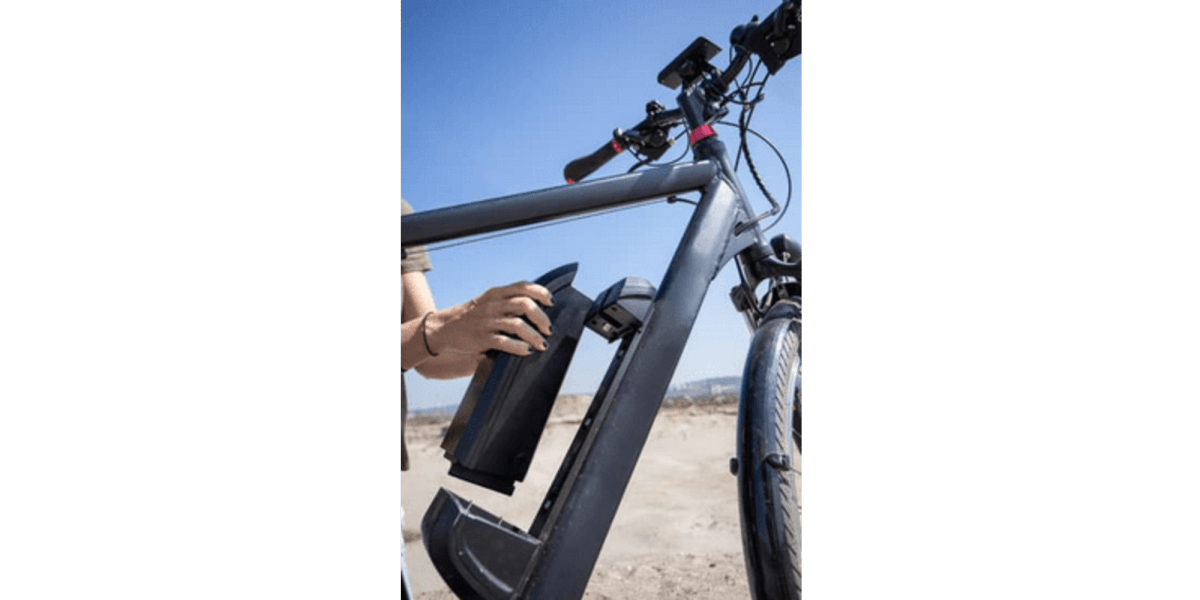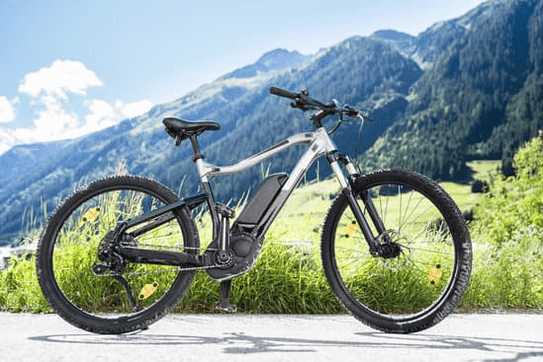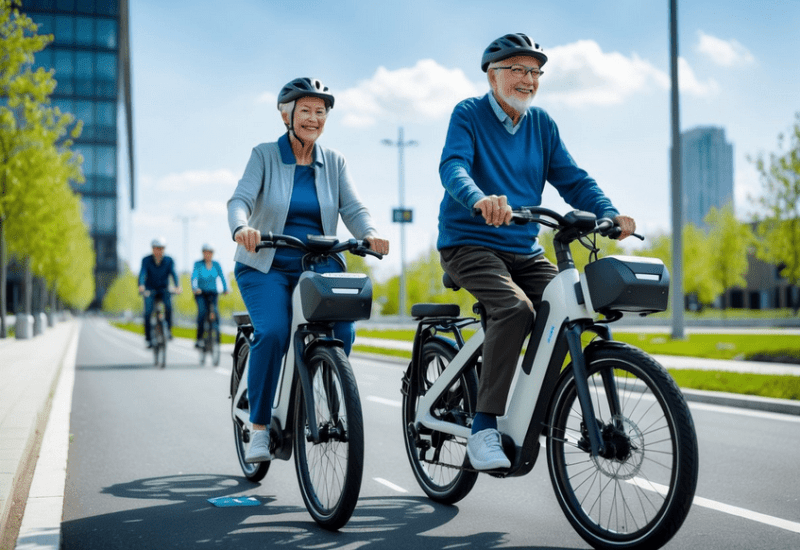As e-bike enthusiasts, we know that chilly weather can present unique challenges for maintaining battery life and performance. It's important to understand how cold temperatures affect our e-bike batteries. Cold weather can significantly reduce battery capacity and range, which can leave us with an unexpectedly short ride.

To help you ride smoothly through winter, we’ll explore effective ways to keep the battery efficient and in great condition during cold spells. From protective gear to smart riding tips, we'll cover strategies to safeguard our batteries despite the drop in temperature.
Maintaining an e-bike in winter requires a proactive approach. With the right care and techniques, we can continue to enjoy our rides even when the weather gets frosty. Let's dive into practical methods to extend the life and efficiency of our e-bike batteries throughout the colder months.
Key Takeaways
- Cold weather reduces e-bike battery capacity
- Insulation wraps can protect battery efficiency
- Proactive care ensures winter performance
Understanding E-Bike Batteries and Cold Weather Impact
When it gets cold, our e-bike batteries face unique challenges. Low temperatures can affect battery performance, increase internal resistance, and pose risks if not managed properly. Let's dive into the details of how cold weather affects e-bike batteries.
The Science of Lithium-Ion Batteries in Low Temperature
Lithium-ion batteries power most e-bikes. In cold weather, these batteries experience increased internal resistance. This means electrons move less freely, reducing the battery's efficiency.
The chemical reactions inside the batteries slow down in low temperatures. This results in less usable power and lower capacity. It’s important for us to store these batteries in warmer places when not in use.
To maintain performance, we should avoid storing or charging our e-bikes in freezing conditions. Warming up the batteries before using them can also be useful.
Why Electric Bike Performance Declines in the Cold
Cold weather affects not just the battery but overall e-bike performance. The drop in temperature reduces battery efficiency, which decreases power output. This impacts the e-bike's range and speed.
Riding in cold conditions can lead to shorter trips before needing a recharge. This is because the battery can't deliver its full current when it’s too cold.
To help minimize impact, we need to be aware of battery health. Regular maintenance and checking the charge levels help us get the most out of our e-bikes during winter months.
Risk Factors for E-Bike Batteries in Freezing Temperatures
Freezing temperatures can pose real risks to e-bike batteries. If not properly managed, prolonged exposure can lead to permanent damage. The cold can cause the battery to lose capacity, and, in severe cases, it might not recharge fully afterward.
In icy climates, it’s crucial for us to store e-bikes indoors. This minimizes potential damage caused by extreme temperatures. We should also charge batteries at room temperature.
Monitoring the weather and using protective covers can safeguard our batteries. By taking these steps, we prevent future issues and extend our e-bike’s battery life.
Preventive Measures for Battery Efficiency
To keep our e-bike batteries working efficiently during winter, we need to focus on protection techniques. Ensuring proper care, using insulating covers, and understanding battery management systems are key.
Optimizing Battery Efficiency through Proper Care
Proper care begins with regular charging, even if we don't ride daily. Cold weather can lower the battery's capacity, making frequent charging important. Storing the battery at room temperature also helps because extreme cold reduces performance. If we remove the battery when not riding, it stays warm and preserves efficiency.
Moreover, cleaning the battery contacts is crucial. Dirt can affect connections and energy flow, so using a soft cloth to clean the contacts can improve performance. This simple step can make a difference during cold months.
The Role of Insulating Covers in Maintaining Battery Heat
Insulating covers are an effective way to maintain battery temperature. In the cold, these covers help keep our batteries warm, which is crucial for efficient performance. They work by creating a barrier against freezing temperatures and wind chill.
By using battery insulation wraps, we can stabilize the temperature, protecting the battery's capacity and range. Installing these wraps is straightforward, and they are available for most e-bike models. Keeping our e-bike batteries in peak condition is made easier with these covers.
Battery Management Systems and Winter Riding
A battery management system (BMS) is essential in monitoring battery health and performance. The BMS manages the charge and discharge processes, ensuring the battery operates within safe parameters. It helps prevent overcharging and extreme discharge, which could damage the battery, especially in winter.
For winter riding, understanding our BMS alerts can help us take preventive actions. Adjusting ride habits—like avoiding full throttle use in the cold—can further preserve battery life. This balance in use protects the battery and enhances efficiency, allowing us to enjoy our rides even in adverse conditions.
Best Riding Practices for Cold Weather Conditions
When riding e-bikes in cold weather, we must consider our riding style, tire selection, and essential accessories like lights and fenders. These practices help maintain battery range and ensure a safe riding experience.
Adjusting Your Riding Style to Preserve Battery Range
In cold weather, it's crucial to adjust how we ride to make the most of our e-bike's battery. We should start by reducing our speed and using lower power settings when possible. This approach not only helps conserve battery power but also increases our control on potentially slippery surfaces. Additionally, we should anticipate stops and start gradually to avoid sudden drains on the battery.
Avoiding headwinds and finding routes with less elevation gain can further enhance efficiency. Monitoring battery usage through our e-bike’s display can help us make real-time adjustments to our riding style to preserve battery life. Staying aware of these factors ensures our battery holds up longer, even in chilly conditions.
The Importance of Tire Selection for Winter Traction and Battery Life
Choosing the right tires is key to maintaining traction and extending battery life during winter rides. Studded tires provide the best grip on icy roads and are worth considering if we frequently encounter challenging conditions. Winter tires with deeper treads also offer improved grip over standard tires and are ideal for snowy paths.
Proper tire pressure is essential; too high can reduce traction, while too low can increase rolling resistance, thus affecting battery life. By ensuring our tires have the right balance of pressure, we maintain both safety and efficiency. Making informed decisions about our tires supports us in getting the most out of our rides without compromising stability.
Navigating Winter Weather: Headlights, Taillights, and Fenders
Winter brings shorter days and unpredictable weather, making visibility crucial. We should use bright headlights and taillights to ensure we're visible to others on the road. It's important that these lights are regularly charged and checked for proper function to provide consistent illumination.
Fenders play a vital role in keeping slush, mud, and debris off us and our bike, thereby preventing potential damage to the battery and other components. Utilizing front and rear fenders keeps our ride cleaner and helps maintain the longevity of our bike. These elements are indispensable for safer and more enjoyable rides in winter weather conditions.
Maintenance and Storage Tips for E-Bike Batteries

In cold weather, preserving our e-bike batteries requires careful attention. We must consider optimal charging practices, proper storage, and protective measures against elements like rust.
Charging Practices to Optimize Battery Life in the Cold
Charging e-bike batteries in the cold requires special care. We should charge the battery indoors where the temperature is stable. Cold weather can slow down the chemical reactions inside the battery, affecting its ability to charge efficiently.
To maintain battery health, it’s best to avoid charging in temperatures below 50°F (10°C). We should allow the battery to warm up to room temperature before plugging it in. Storing the battery with a charge between 50% to 70% helps in maintaining its lifespan over the winter months.
Storing Your E-Bike in a Temperature-Controlled Environment
For effective winter storage, we need to keep our e-bike in a temperature-controlled space. Storing it in a garage or a basement where the temperature remains between 50-77°F (10-25°C) is ideal. This helps prevent permanent damage that can occur when batteries are exposed to extreme cold.
Humidity also plays a role in storage. A dry environment minimizes the risk of moisture damage. Using a protective cover shields the e-bike from dust and dirt, ensuring it remains in good condition throughout the cold season.
Protecting Against Rust and Corrosion During Winter Storage
Our e-bikes can suffer from rust and corrosion if left unprotected during winter. To guard against this, applying a protective anti-rust spray on metal parts can be beneficial.
It’s important to keep chains and other exposed parts clean and lubricated. Checking and tightening any loose parts before storage reduces the risk of rust forming in crevices. We should also periodically inspect the e-bike during storage to ensure no rust is developing, maintaining the bike’s integrity and functionality.
Advanced Protection and Gear for Winter E-Biking

During winter, keeping our e-bikes functional and safe requires special gear and adjustments. We need to consider heated accessories for comfort, fat tires for better traction, and custom modifications for severe cold.
Heated Accessories: From Grips to Battery Covers
Heated accessories are crucial when biking in the cold. Heated grips keep our hands warm, making rides more enjoyable and maintaining dexterity for better control. They are easy to install and usually have adjustable settings for different temperatures.
Another essential is heated battery covers. These covers retain warmth and help in maintaining battery efficiency during frigid conditions. Made from materials like neoprene or fleece, they prevent deep discharge and optimize battery life. Together, these accessories make winter rides more comfortable and reliable.
Fat Tire E-Bikes: Enhanced Winter Traction and Stability
Fat tire e-bikes offer excellent traction on snow and ice. The wide tires distribute our weight better, reducing the likelihood of getting stuck or slipping. These bikes are designed to handle rough terrain, making them an excellent choice for winter conditions.
With their enhanced stability, fat tire e-bikes also allow us to explore more challenging paths. We can even opt for studded tires for extra grip, providing greater control and safety in icy environments. This upgrade is particularly helpful for those navigating through snowy and slippery streets regularly.
Customizing Your E-Bike for Extreme Cold Conditions
Customizing our e-bikes for cold weather means using gear suited for freezing conditions. Apart from heated accessories and fat tires, adding fenders can help keep the bike cleaner and more efficient by deflecting slush and dirt away from crucial components.
Regular maintenance, including degreasing the chain and using lubricants suitable for low temperatures, ensures smooth functioning. We might also consider waterproofing essentials, protecting sensitive parts from moisture-related damage. With these customizations, our e-bikes can endure even the harshest winter rides smoothly.
Frequently Asked Questions

When dealing with e-bike batteries in cold weather, it's essential to use proper insulation and storage practices to maintain performance. Temperature limits and specific storage tips can also help extend battery life. Here are answers to common questions on this topic.
How do I maintain optimal battery performance for my e-bike during cold weather conditions?
We should store the battery indoors when not in use. Keeping the battery warm is key to sustaining its performance in colder weather.
What type of insulation cover is best for protecting an e-bike battery in low temperatures?
Battery insulation wraps are a popular choice. They help keep the battery temperature stable, ensuring better performance.
What measures should be taken to protect an e-bike battery when not in use during winter?
We ought to remove the battery from the e-bike and store it indoors. This helps protect it from severe cold.
At what temperature range should an e-bike not be operated to prevent battery damage?
E-bikes should generally not be operated in temperatures below 32°F (0°C). Operating in lower temperatures can harm the battery.
Is it necessary to remove the e-bike battery in freezing weather, and how should it be stored?
Yes, removing the battery is advisable. It should be stored in a temperature-controlled area to prevent any damage.
Can a thermal cover significantly extend the battery life of an e-bike in cold climates?
Thermal covers can indeed help. They maintain a suitable temperature for the battery, which supports longer life and better efficiency when riding in cold climates.
DISCLAIMER
This document is provided for general information purposes only and should not be relied upon as providing legal advice, technical, or specific operational guidance to the reader, whether as to the practices described in the document or the applicable legal requirements and regulations. justelectricbikes.com expressly disclaims any responsibility for liability arising from or related to the use or misuse of any information in this document.



